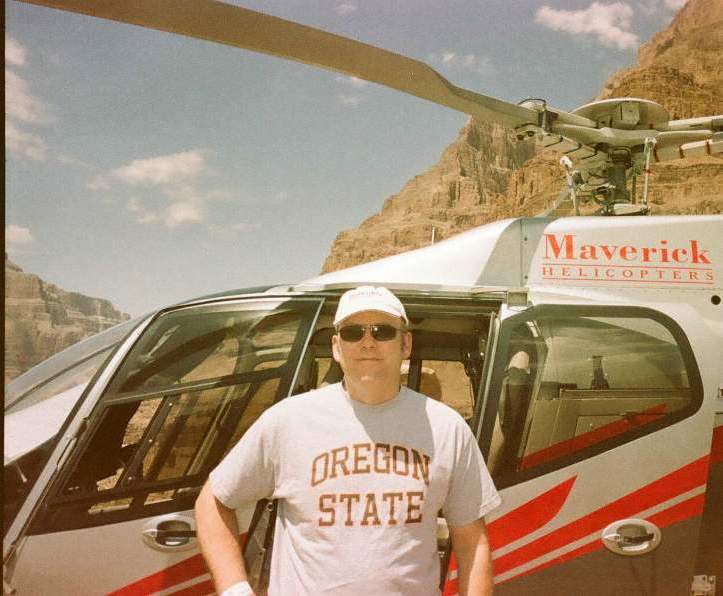Plaintiffs may achieve higher verdicts in product liability trials when there is evidence of prior claims establishing that the manufacturer had notice of the alleged defect in design, manufacture, or warning. Therefore, in product liability litigation, most plaintiffs request discovery concerning prior claims, or incidents that did not give rise to formal claims, that are in any way related to the product. For instance, a plaintiff’s lawyer might issue a broad discovery request for anything concerning prior incidents of any kind related to the model of product at issue or any version of that model. Even more common and problematic are so-called “product line” requests that seek evidence of prior claims related to a broad range of allegedly similar products or similar models.
Requests for production concerning prior incidents might be routine for large companies that have large, sophisticated in-house legal teams and are likely to have storage, retrieval, and document retention policies, but such requests can be a terrible disruption for small businesses that may not have systems in place to handle aggressive discovery in litigation.
But no matter what size your client is, you should be prepared for a request for production seeking evidence of prior incidents and prior claims. You should have discussions with your product liability clients early on in the case about the product’s incident and claim history, as well as potential discovery requests.
The first part of this article will discuss whether requests concerning prior incidents are actually discoverable. We will discuss defense tactics for responding to requests for discovery concerning prior incidents, as well as representative cases from different U.S. federal court jurisdictions concerning discovery.
The second part of this article will discuss whether, even if discoverable, the evidence concerning prior incidents is ultimately admissible. We will discuss strategies for preventing admission of evidence concerning prior incidents, as well as representative cases from different U.S. federal court jurisdictions concerning admissibility.
Finally, the third part of this article will discuss strategies for assisting clients with the difficult process of discovery requests for evidence of prior incidents.
I. Whether requests concerning prior incidents are actually discoverable.
A. Defense tactics for responding to requests for discovery concerning prior incidents.
There is no single method for successfully defending against discovery requests for evidence concerning prior incidents. Unfortunately, U.S. federal courts treat each case differently and, as explained below, various jurisdictions have different standards for the discovery of evidence of prior incidents.
That said, the facts and circumstances of each case are important, and any good defense will involve distinguishing the specific facts of your case from cases where the court allowed discovery. Consider, for example, the distinguishing facts of the products, conditions, and intended uses at issue, particularly if you have a technical case.
Consider hiring an expert as early as possible and using your expert to assist you with defending against discovery requests. Your can submit an affidavit from your expert explaining the differences between the incident involved in your case and the prior incidents. The more technical your case, the more likely your expert will be useful and will be able to draw distinctions that the plaintiff is not prepared for. An example of this might be important engineering differences in the product at issue versus the products involved in the discovery that plaintiff requests.
B. Representative cases from different U.S. federal court jurisdictions concerning discovery.
1) Discovery of evidence concerning prior incidents is generally allowed in federal court under Federal Rule of Civil Procedure 26(b)(1).
Federal Rule of Civil Procedure 26(b)(1) is broad and provides that discovery may be obtained as long as it is “relevant” and “reasonably calculated to lead to the discovery of admissible evidence.” The advisory committee notes to Rule 26 provide that, “A variety of types of information not directly pertinent . . . could be relevant to the claims or defenses raised in a given action. For example, other incidents of the same type, or involving the same product, could be properly discoverable . . . .” Fed. R. Civ. P. 26 advisory committee’s note, 2000 amend., subdiv. (b)(1).
In Kozlowski v. Sears, Roebuck & Co., 73 F.R.D. 73, 75 (D. Mass. 1976), the court underscored how broad discovery can be in federal products cases when it noted that, “most courts have held that the existence and nature of other complaints in product liability cases is a proper subject for pretrial discovery.”
2) Some jurisdictions (the Eighth Circuit, the Northern District of California, Kansas, the Southern District of Indiana, Maryland, and the Western District of Pennsylvania) require a threshold showing of relevance before the discovery is permitted. After a threshold showing of relevance, the burden shifts to the defendant to demonstrate that any relevance is outweighed by the harm that would result from the evidence being admitted.
The ambiguous nature of the term “relevance” illustrates the problematic nature of the discovery phase of a lot of product liability claims. Plaintiffs will make requests for “other incidents of the same type” or “other incidents involving” the product (or products, i.e., “all washing machines manufactured by defendant”) at issue or prior incidents with “similar circumstances”.
Some jurisdictions will require a “threshold showing of relevance” before evidence of prior incidents will be discoverable. See, e.g., Hofer v. Mack Trucks, Inc., 981 F.2d 377, 380 (8th Cir. 1992) (“Some threshold showing of relevance must be made before parties are required to open wide the doors of discovery and to produce a variety of information which does not reasonably bear upon the issues in the case.”); Barcenas v. Ford Motor Co., 2004 WL 2827249, *2 (N.D. Cal. Dec. 9, 2004) (quoting with approval Hofer’s requirement of the threshold showing of relevance); McCoy v. Whirlpool Corp., 214 F.R.D. 642, 643 (D. Kan. 2003) (requiring that the discovery appear “relevant on its face”); Chavez v. DaimlerChrysler Corp., 206 F.R.D. 615, 619 (S.D. Ind. 2002) (the discovery must first appear to be relevant, and then “the party resisting the discovery has the burden to establish the lack of relevance by demonstrating that the requested discovery is of such marginal relevance that the potential harm occasioned by discovery would outweigh the ordinary presumption in favor of broad disclosure.”); Tucker v. Ohtsu Tire & Rubber Co., 191 F.R.D. 495, 497 (D. Md. 2000) (“even though it relates to a light truck tire, not a passenger tire as is at issue here, the plaintiffs have established threshold relevance, as required by Fed. R. Civ. P. 26(b)(1) and Fed. R. Evid. 401.”); Swain v. General Motors Corp., 81 F.R.D. 698, 700 (W.D. Pa. 1979), (where the plaintiff met the “prima facie showing” of relevance to support his discovery request for evidence “concerning prior motor mounts” that allegedly failed in his vehicle).
3) Some jurisdictions (the Western District of Michigan, the Eastern District of Louisiana, and the Southern District of New York) require that prior incidents be “similar” to the incident that gave rise to the underlying case before allowing the discovery of evidence of prior incidents. Whether the prior incidents are “similar” depends on the particular court and the facts and circumstances.
Most jurisdictions generally do not apply the “substantially similar test”—requiring that the conditions of past incidents be substantially similar to those in the underlying case—until the admissibility phase. However, some jurisdictions do require some amount similarity between the prior incidents and the incident that gave rise to the underlying case before allowing discovery.
For example, in Lohr v. Stanley–Bostitch, Inc., 135 F.R.D. 162, 164 (W.D. Mich. 1991), the court explained that, at the discovery phase, the circumstances surrounding prior incidents must be “similar enough”. By contrast, at the admissibility phase, “Evidence of similar accidents is admissible so long as the conditions in effect during the past incidents are ‘substantially similar’ to those at the time of the incident in question and the two events arise from the same cause.” Id. (internal citation omitted).
In State Farm Fire & Cas. Co. v. Black & Decker, Inc., 2003 WL 103016, *4 (E.D. La. Jan. 9, 2003), the court applied a “sufficiently similar” test and explained that, “In product liability actions it is frequently difficult to judge which of a manufacturer’s products are sufficiently similar to the allegedly defective product to be subject to discovery.” As in Lohr, the Eastern District of Louisiana court in State Farm distinguished the less-stringent similarity standard for the discovery phase from the “substantially similar” standard applied to the admissibility phase. State Farm, 2003 WL 103016 at *4 (quoting Lohr, 135 F.R.D. at 163).
In Fine v. Facet Aerospace Products Co., 133 F.R.D. 439, 441, 443 (S.D.N.Y. 1990), the Southern District of New York explained that the prior incidents must be “sufficiently similar” in order to meet the “threshold showing of relevance”. The court explained that, if the models of product in the prior incidents are different from the one at issue in the underlying case, discovery may be allowed if the models involved in the prior incidents “share with the accident-causing model those characteristics pertinent to the legal issues raised in the litigation. For example, where a plaintiff alleged that three-wheel all-terrain vehicles are inherently unstable, he was entitled to discovery with respect to each of the manufacturer’s models.” Id. (citing Culligan v. Yamaha Motor Corp., 110 F.R.D. 122, 124, 126 (S.D.N.Y. 1986)).
A court may require expert testimony to support the showing that the prior incidents were “sufficiently similar”, particularly when there are technical issues that require more knowledge than a lay person. In Fine, the court explained that the plaintiff may have been allowed discovery if it had proffered “the affidavit of an expert in aviation engineering.” Id. at 443. Because plaintiff did not proffer any such expert testimony, the court denied the plaintiff’s motion to compel discovery concerning alternative designs for planes. Id. at 443.
4) In the discovery phase, a few of jurisdictions (the Northern District of California, the Northern District of Illinois, and the District of New Mexico) have applied the more stringent “substantially similar” test that most courts do not apply until the admissibility phase.
In a few jurisdictions, the plaintiff bears the burden of showing that prior incidents involving different products are “substantially similar” before discovery will be allowed. For example, not only has the Northern District of California required a threshold showing of relevance before allowing discovery concerning prior incidents, but it has also required plaintiffs to show “that the different products are substantially similar . . . .” Barcenas, 2004 WL 2827249 at *3
In Piacenti v. General Motors Corp., 173 F.R.D. 221, 225-26 (N.D. Ill. 1997), the court held that the plaintiff failed to establish that a different model of vehicle was “substantially similar” and denied the plaintiff’s motion to compel. The court explained that, “allowing discovery of models that are not substantially similar to the model at issue is truly the equivalent of comparing apples and oranges where there are differences between the other models and the model at issue in terms of wheelbase, width, and center of gravity.” Id. at 225. The court further stated that discovery concerning similar models should only be allowed if “the similar models have the same component parts or defects”. Id.
In Gonzales v. Goodyear Tire and Rubber Co., the court noted that the “substantially similar” test applies if the plaintiff “seeks to discover or to introduce evidence of the design, testing or performance of other similar products . . . . .” No. CIV 05–941 BB/LFG, 2006 WL 7290047, slip op., *7-9 (D.N.M., Aug. 10, 2001) (italics added).
Expert testimony may be helpful for both sides in these cases, but such testimony must be more than “conclusory.” For example, in Piacenti, the court denied the plaintiff’s motion to compel answers to interrogatories and its supplemental request for production concerning evidence regarding other vehicle models manufactured by the defendant. 173 F.R.D. at 222. The denial was without prejudice so that an expert opinion could be filed stating that the models “are sufficiently similar to the Suzuki Samurai [so] that tests performed on the Samurai would be relevant in determining liability with respect to the Geo Tracker [the plaintiff’s vehicle].” Id. Although the plaintiff submitted expert affidavits, the court found that they consisted of only “conclusory” statements as compared to the defendant’s expert affidavits, which were more detailed. Id. at 225. Therefore, the court ultimately disallowed discovery relating to models other than the one at issue in the lawsuit. Id. at 225-26.
II. Whether, even if discoverable, the evidence concerning prior incidents is ultimately admissible.
A. Strategies for preventing admission of evidence concerning prior incidents.
As with requests for discovery, there is no silver bullet to fight against requests for the admissibility of evidence concerning prior incidents. However, because the requirements for admissibility can generally be more stringent than the requirements for discovery, it is almost always worth fighting the admissibility of evidence of prior incidents.
You will be better prepared to fight against the admissibility of prior incidents if you hire your expert early in the case. Prepare your expert to distinguish your case from evidence of any prior incidents that plaintiff might seek to admit at trial. Expert testimony will almost always be helpful to distinguish your case from the prior incidents. A good plaintiff’s lawyer will have an expert who will try to show that the prior incidents are similar to the case at issue. Prepare for this early by ensuring that your expert is familiar with the product and with any evidence of prior incidents that plaintiff will seek to admit. Make sure that your expert’s opinions are based on detail and technical knowledge and that they are not conclusory.
The value of the case may be significantly affected if the evidence of prior incidents is admitted. It is always beneficial to know early on in the case whether the evidence will be admitted and the ways in which that can affect the case value. Therefore, try to file your motions in limine early on in the case to prevent the admissibility of evidence of prior incidents. Litigators generally wait too long to do motions in limine, e.g., we wait until the federal court deadline, just prior to the trial. Consider filing motions in limine early on, especially in a technical case or if you feel that the evidence of prior incidents could really hurt you in front of the factfinder.
B. Representative cases from different U.S. federal court jurisdictions concerning admissibility.
1) In most jurisdictions, evidence of prior incidents is generally admissible as long as the other incidents are “substantially similar” to the incident in the case at hand.
Evidence of prior incidents is generally admissible as long as the plaintiff demonstrates that the other incidents are “substantially similar” to the incident in the case at hand. Cooper v. Firestone Tire & Rubber Co., 945 F.2d 1103, 1105 (9th Cir. 1991). See also Albee v. Contl. Tire N.A., Inc., 2010 WL 1729092, *6 (E.D. Cal. Apr. 27, 2010) (internal citations and some quotation marks omitted) (“The Ninth Circuit has repeatedly held that . . . ‘substantial similarity is required when a plaintiff attempts to introduce evidence of other accidents as direct proof of negligence, a design defect, or notice of the defect.’ Minor or immaterial dissimilarity does not prevent admissibility.” ); Steede v. General Motors, LLC, 2013 WL 142484, *9 (W.D. Tenn. Jan. 11, 2013) (“the Sixth Circuit has recognized the substantial similarity doctrine and held, for example, that evidence of prior accidents is admissible to prove a defect so long as the prior accidents involved the same model, design, and defect, and occurred under similar circumstances”).
What is “substantially similar” will be determined on a case-by-case basis, depending on your jurisdiction.
For example, in Ramos v. Liberty Mut. Ins. Co., 615 F.2d 334, 338 (5th Cir.), modified on other grounds, 620 F.2d 464 (5th Cir. 1980), the plaintiff sought to admit evidence of a prior incident involving the collapse of an oil rig mast. The court ultimately found that the prior incident was substantially similar. It explained that, “Evidence of similar accidents might be relevant to the defendant’s notice, magnitude of the danger involved, the defendant’s ability to correct a known defect, the lack of safety for intended uses, strength of a product, the standard of care, and causation.” Id. at 338-39. The court found that evidence of the prior collapse could be relevant to show “notice of the defect, its ability to correct the defect, the mast’s safety under foreseeable conditions, the strength of the mast, and, most especially, causation.” Id. at 339.
The court also stated that the admissibility of evidence of prior incidents concerning a product “depends upon whether the conditions operating to produce the prior failures were substantially similar to the occurrence in question. The requirement that the prior accident not have occurred at too remote a time is a special qualification of the rule requiring similarity of conditions.” Id. (internal citations and quotation marks omitted).
A plaintiff may use expert testimony to assist with its burden to show that the prior incidents are “substantially similar” and a defendant may use expert testimony to show that the prior incidents are substantially dissimilar. Id. at 339-340. See also Haynes v. Am. Motors Corp., 691 F.2d 1268, 1271–72 (8th Cir. 1982) (the defendant’s expert testified concerning dissimilarities between two different models of Jeeps and the court ultimately excluded evidence from the operator’s manual of the non-subject model).
Evidence concerning prior incidents may also be admissible because it is relevant “to show a culpable state of mind on the part of the defendant, e.g., persevering in a refusal to provide available safety features on a product despite knowledge of other similar accidents.” Gonzales, 2006 WL 7290047 at *6 (citing Smith v. Ingersoll–Rand Co., 214 F.3d 1235, 1250 (10th Cir. 2000)).
2) In the Fourth Circuit and the Tenth Circuit, the substantially similar rule may be relaxed if the evidence of prior incidents is used to prove notice or awareness of a dangerous condition (rather than causation).
The Fourth Circuit and the Tenth Circuit may relax the “substantially similar” rule if the evidence of prior incidents is used to prove notice or awareness of a dangerous condition rather than causation. For example, in Benedi v. McNeil–P.P.C., Inc., 66 F.3d 1378, 1386 (4th Cir. 1995), the court explained that, “When prior incidents are admitted to prove notice, the required similarity of the prior incidents to the case at hand is more relaxed than when prior incidents are admitted to provide negligence. The incidents need only be sufficiently similar to make the defendant aware of the dangerous situation.” (Internal citations omitted.)
In Ponder v. Warren Tool Corp., the court noted that, “When evidence of other accidents is used to prove notice or awareness of a dangerous condition, the rule requiring substantial similarity of those accidents to the one at issue should be relaxed.” 834 F.2d 1553, 1560 (10th Cir. 1987).
III. Strategies for assisting clients with the difficult process of discovery requests for evidence of prior incidents.
Clients often feel strongly that the prior incidents are not relevant and should have no bearing upon their lawsuit. As any experienced lawyer knows, extensive requests for production can lead many clients who are less experienced with such requests to anxiously perceive that their entire brand, company, or even their own personal judgment is being put on trial.
Client resistance to production of evidence concerning prior incidents may be mitigated with repeated early discussion of discovery practice and relative risks. Engage in detailed discussions before the requests are actually made. If you practice in a jurisdiction with very liberal discovery rules, and if you have a particularly unsophisticated or reluctant client, you may even want to discuss the potential for sanctions in the event that discovery is wrongly withheld.
As soon as possible, you should have a discussion with your client concerning issues such as the assigned judge, the jurisdictional tendencies, whether or not production or admissibility of the evidence would be damaging, and whether the prior incidents may show prior notice of an alleged defect.






